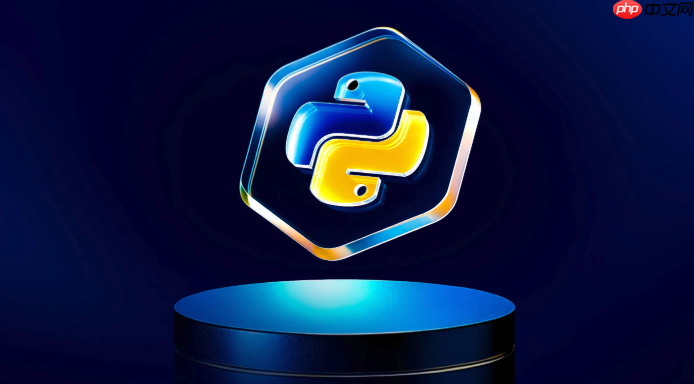Python中实现定时任务需结合调度机制而非依赖多线程本身。1. threading.Timer适用于一次性延迟任务,通过创建新Timer对象实现循环执行;2. schedule库支持复杂周期调度,配合守护线程在后台运行,避免阻塞主线程;3. 多线程环境下需注意线程安全、异常处理和日志记录,共享资源访问应使用Lock;4. 生产环境推荐APScheduler,支持持久化、Cron表达式和动态管理任务,通过BackgroundScheduler在独立线程中非阻塞执行。关键在于将调度逻辑置于独立线程,确保主流程不受影响。

Python中实现定时任务并不依赖多线程本身,而是通过调度机制触发任务。虽然多线程可以用来并发执行多个任务,但要实现“定时”功能,需要结合定时调度逻辑。下面介绍如何使用Python的标准库和第三方工具,在多线程环境下安全高效地实现定时任务。
threading.Timer 是Python标准库中轻量级的定时器类,适合执行一次性的延迟任务。它在单独线程中运行,不会阻塞主线程。
示例:5秒后执行任务
from threading import Timer
def my_task():
print("定时任务执行了!")
# 5秒后执行 my_task
timer = Timer(5.0, my_task)
timer.start() # 启动定时器
def repeat_timer():
my_task()
Timer(5.0, repeat_timer).start() # 每5秒调用一次
repeat_timer()
注意:每次都要创建新的Timer对象,不能重复使用已启动或已取消的Timer。
schedule 是一个简洁易用的第三方库,支持按秒、分钟、小时、天等单位设置任务,常配合后台线程使用。
立即学习“Python免费学习笔记(深入)”;
安装:pip install schedule
示例:每天10:30执行,同时不阻塞主线程
import schedule
import time
from threading import Thread
def job():
print("It's time to do the job!")
# 设置任务
schedule.every().day.at("10:30").do(job)
schedule.every(10).seconds.do(job) # 每10秒也执行一次
# 在后台运行调度器
def run_scheduler():
while True:
schedule.run_pending()
time.sleep(1)
# 启动调度线程
thread = Thread(target=run_scheduler, daemon=True)
thread.start()
# 主程序继续运行
while True:
time.sleep(1)
daemon=True 表示该线程为守护线程,主程序退出时自动结束。
在多线程中运行定时任务,需关注线程安全与资源竞争问题。
import logging
from threading import Lock
logging.basicConfig(level=logging.INFO)
data_lock = Lock()
shared_data = []
def safe_task():
try:
with data_lock:
shared_data.append(time.time())
logging.info("任务执行成功")
except Exception as e:
logging.error(f"任务出错: {e}")
对于更复杂的场景(如持久化任务、Cron表达式、动态增删任务),推荐使用 APScheduler(Advanced Python Scheduler)。
安装:pip install apscheduler
示例:每10秒执行一次,使用ThreadPoolExecutor
from apscheduler.schedulers.background import BackgroundScheduler
import atexit
def tick():
print("Tick! 现在时间:", time.strftime("%M:%S"))
scheduler = BackgroundScheduler()
scheduler.add_job(tick, 'interval', seconds=10)
scheduler.start()
# 注册退出时关闭调度器
atexit.register(lambda: scheduler.shutdown())
APScheduler 支持多种调度方式(date, interval, cron),可集成数据库存储任务,适合长期运行的服务。
基本上就这些。根据需求选择合适的方式:简单任务用 Timer,日常调度用 schedule,生产环境考虑 APScheduler。关键是把调度逻辑放到独立线程中,避免阻塞主流程。多线程+定时任务的核心在于“非阻塞+周期检查”,掌握这一点就能灵活应对各种场景。
以上就是Python多线程如何实现定时任务 Python多线程调度器开发指南的详细内容,更多请关注php中文网其它相关文章!

每个人都需要一台速度更快、更稳定的 PC。随着时间的推移,垃圾文件、旧注册表数据和不必要的后台进程会占用资源并降低性能。幸运的是,许多工具可以让 Windows 保持平稳运行。

Copyright 2014-2025 https://www.php.cn/ All Rights Reserved | php.cn | 湘ICP备2023035733号